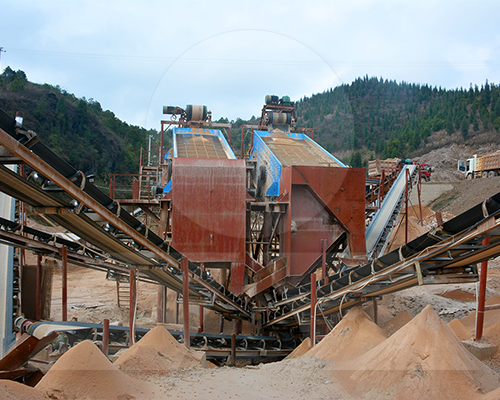The Role of Vibrating Screens in Iron Ore Washing: Enhancing Efficiency in Ore Processing
Vibrating screens are essential in the iron ore washing process, where they play a key role in the efficient separation and classification of materials. This equipment is vital for ensuring high-quality outputs, as it removes impurities and enables the extraction of valuable iron content from raw ore. In this article, we explore the application of vibrating screens in iron ore washing, their benefits, and their impact on overall production efficiency in the mining sector.
Function of Vibrating Screens in Iron Ore Washing
Vibrating screens operate by applying vibration to a screen mesh, which causes particles to separate based on size. In the iron ore washing process, the screens are usually positioned after a washing drum or hydrocyclone to ensure efficient removal of unwanted particles. As the ore is washed, the vibrating screen effectively removes fine particles, clay, and other impurities, enhancing the quality of the processed iron ore and making it ready for further processing.
Key Benefits of Vibrating Screens in Iron Ore Washing
- Improved Quality of Iron Ore: By removing impurities and undersized particles, vibrating screens help to achieve a higher-grade ore. This is essential in iron production, as cleaner ore translates to more efficient smelting and higher-quality iron.
- Increased Processing Efficiency: Vibrating screens allow for continuous separation of unwanted material from the iron ore. This results in a streamlined washing process, reducing time and labor costs and allowing for the consistent processing of large volumes of ore.
- Versatility and Adaptability: Vibrating screens can be adjusted for different particle sizes, making them suitable for handling a variety of ore conditions. This adaptability is essential in mining, where ore properties can vary across different deposits or production phases.
Applications in the Iron Ore Industry
- Primary Washing and Pre-Screening: In the early stages of ore processing, vibrating screens are commonly used to separate larger impurities and fines. By removing these unwanted particles early on, the screens prevent the clogging of downstream equipment and improve overall efficiency in the washing process.
- Secondary and Fine Screening: After primary washing, vibrating screens perform secondary screening to ensure that the remaining material meets size and quality requirements. This stage of screening further improves ore quality and prepares the material for subsequent stages, such as magnetic separation or flotation.
- Dewatering Iron Ore: Vibrating screens are also widely used for dewatering iron ore. The screens drain excess water from the ore, making it easier to transport and reducing moisture content, which is beneficial for smelting and other processing stages.
Environmental Benefits and Resource Optimization
Using vibrating screens in iron ore washing supports sustainable mining practices by maximizing the extraction of valuable materials and minimizing waste. By separating and removing impurities at each stage, vibrating screens help reduce the need for additional raw material extraction, conserving resources and reducing environmental impact.
Conclusion
Vibrating screens have proven to be an essential component in iron ore washing, offering improved ore quality, greater processing efficiency, and reduced environmental impact. Their versatility and adaptability make them valuable tools in various stages of ore processing, from primary washing to dewatering. As the mining industry continues to demand high-efficiency solutions, vibrating screens will remain indispensable in achieving optimal iron ore production and supporting environmentally responsible practices.
- > Suitability of Mobile Crushing Plants in Mining Operations
- > 200 TPH Mobile Cone Crushers
- > Common Issues in the Operation of Impact Crushers and Their Solutions
- > Applications of Impact Crushers in the Construction and Mining Industries
- > HSPF Series Impact Crushers for Ore Crushing
- > Efficient GZG Series Vibrating Feeder for Metallurgy: A Key Component in Modern Industrial Processes
- > The Role of Vibrating Feeders in Artificial Sand Production: Enhancing Efficiency and Output
- > The Role of Mobile Construction Waste Crusher in Road Renovation Projects
Hot Product


Online




Message

